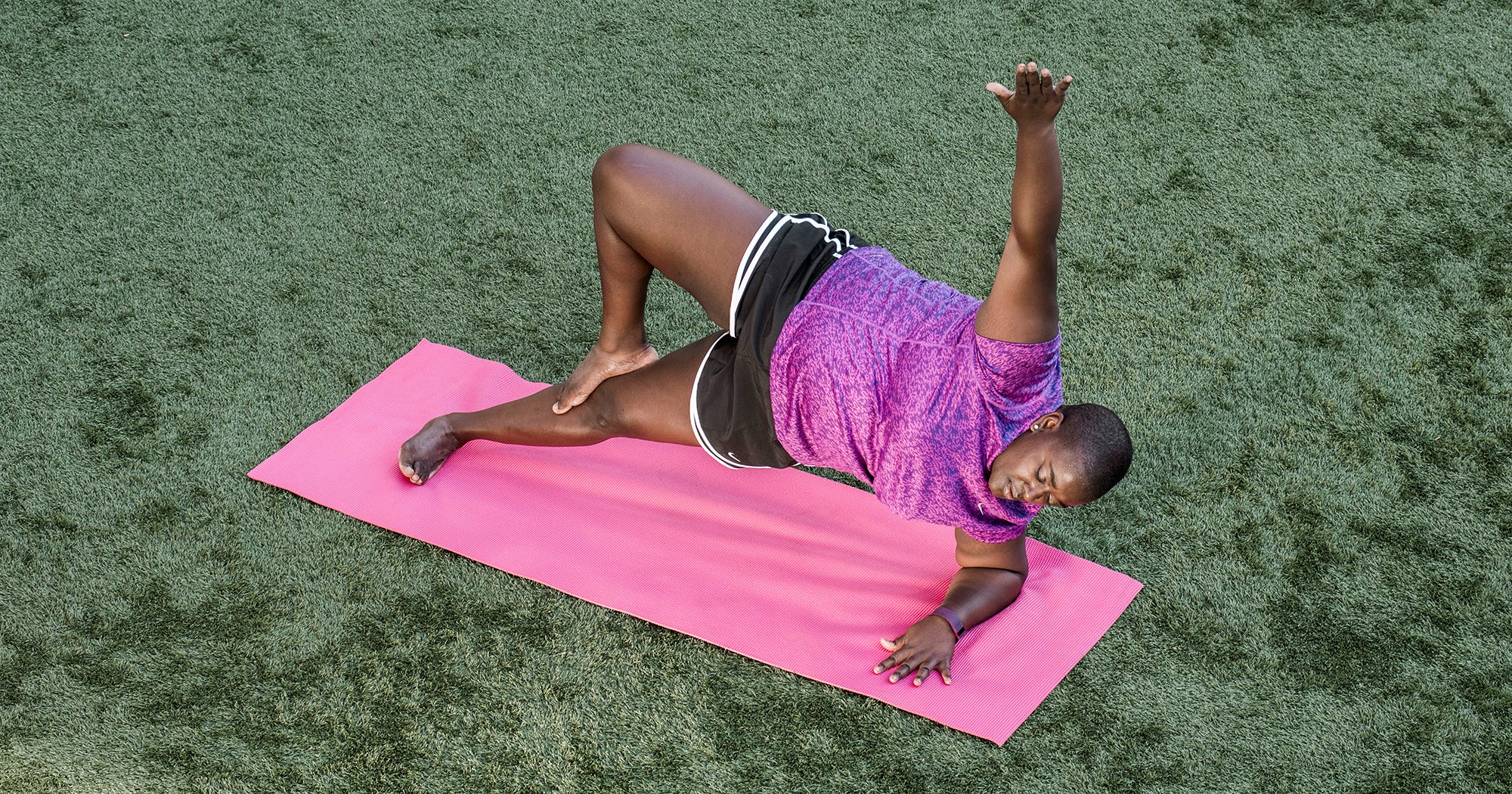
The downward dog is one of the most well-known yoga poses. The pose is great for stretching your spine, releasing tightness and improving your posture. It can also be used as a transitional pose. This pose is perfect for someone who is new to yoga or doesn't have the time or desire to take a class.
Studies have shown that Downward Dog can prevent carpal tunnel syndrome (low back pain) and reduce low back pain. It helps you to improve your balance and energy levels. It can also improve flexibility. Down Dog can be done on its own or in combination with other yoga poses.
Start with your hands a shoulder width apart. Reach one leg behind the other, keeping your hands at shoulder width. If you wish, you can bend your knees. For deeper stretching, you can extend your hips toward the ceiling.

You will need to also use your upper body for strengthening your shoulders and hamstrings while in this position. If these areas are not strong, you can compensate by pulling your shoulders back from your ears. This could cause your spine to become rounder. To strengthen your muscles, it's a good idea for you to hold the pose for at least a few minutes.
Down Dog not only strengthens your shoulders and hamstrings but also helps you engage your pelvic floor muscle and inner elbows. It also provides a great stretch for your lower legs. You'll also increase blood flow to your brain and warm your whole body by practicing Down Dog.
Down Dog is an excellent way to keep your muscles active and still have fun. The app allows you to customize your yoga practice and make the most of your time. You can customize your yoga practice by choosing a focus or yogi level. You can also choose your own soundtrack to play while you are practicing. There are many voice coaching options available. You can choose from six different professionals depending on which one you prefer. There are also 33 different YouTube videos to choose from.
The Down Dog app is also available for your tablet or phone. It allows you to practice yoga from anywhere with an internet connection. You can access a large library of poses and many classes through the app. You can also take advantage of the boosts feature, which allows you to customize your classes based on your level, focus, or the music you prefer. You can track your practice with the app.

Down Dog is completely free of charge until April 1. If you're interested in trying it out, you can sign up for a free trial. After you become a registered member, you will be able to take advantage of all of the benefits. You can access a library that includes over 280 poses. You can also schedule classes, listen, or even track your practice. A $8 per month subscription fee is required.
FAQ
What happens when you practice yoga every single day?
You feel relaxed, calm, and centered. It improves balance, posture, and flexibility.
You become more conscious of your body and how it reacts to movement. This awareness can make you more aware and conscious about yourself.
Yoga also improves your concentration.
Your mind becomes more sharp and clear. It calms the nervous system. It reduces stress levels. It can also give you a sense peace and well-being.
How long does yoga take to work?
Although yoga is difficult, it can be done with great results. It takes time in order to build strength and flexibility. It is important to start slowly and increase your intensity gradually until you reach the optimal level.
Consistency and consistency are the keys. The more often you practice, the better you become at it.
How long does it take to learn yoga?
Yoga is a lifelong endeavor that requires dedication as well as patience. Truth is, everyone learns things at their own pace.
It doesn't matter how old or young you are. You can master any type of yoga routine if you put in enough effort and are willing to work hard.
How long should a yoga session be?
A typical yoga session takes between 45 minutes and one hour. The type of yoga you do will affect the time taken. 45-60 minutes is probably sufficient if you are looking to do strength-building exercises. If you are looking for relaxation or mediation, a longer time may be required.
The length also varies depending on what kind of yoga class you're taking - some classes focus on moving quickly while others emphasize slow, deep stretches.
Where can you find a certified yoga teacher?
Find qualified yoga instructors in your area. You may also be able to search for a teacher online if you aren't located near a studio. Also, consider joining a yoga class that offers online registration.
Statistics
- According to the Agency for Healthcare Research and Quality, falls are incredibly common among older adults in nursing facilities. Even the simplest ones can increase the risk of death (24). (healthline.com)
- Lock in 25% off your Founding Member rate. (corepoweryoga.com)
- Gentle yoga has been shown to ease some of the discomforts of tender, swollen joints for people with arthritis, according to a Johns Hopkins review of 11 recent studies. (hopkinsmedicine.org)
- Start your Fall off right with 20% off All Access Membership when you sign up by 9/25! (corepoweryoga.com)
- About one in seven U.S. adults practiced yoga in the past 12 months, according to a 2017 national survey. (nccih.nih.gov)
External Links
How To
Yoga is a good exercise?
Yoga isn't for people who just want to lose weight. Yoga is not just for those who want to lose weight. It helps them develop flexibility and balance.
Yoga isn’t just exercise. Instead, it’s an art form. These poses can help you to relax and calm down. These poses help improve our posture, concentration, breathing, and overall health.
Yoga is practiced by yogis. Yogis follow various forms of yoga, including Hatha, Ashtanga, Iyengar, Vinyasa, Bikram, Kundalini, Yin Yang, and Restorative.
There are many kinds of yoga. However, all share similar goals. Each type of yoga focuses on different aspects. Some yoga styles include meditation, pranayama, and Hatha.
Some yoga exercises don't require you to have any equipment
-
Sun Salutation: This series of 12 postures begins with a forward bent, and then 10 additional poses.
-
Warrior Pose: While holding a stick, or staff, you can do a warrior pose.
-
Triangle Pose: This is where one leg is lifted behind the other and you bend at your knees.
-
Standing Forward Bend – This is a pose where you sit on the ground with your legs straightening and then fold forward at the waist.
-
Seated Twist - This pose is performed while seated on a chair or mat.
-
Cobra Pose – This is a pose where you lie flat on your back and raise your arms above your head.
-
Child's pose - This is when you are lying on your back, face up.
-
Cat/Cow Pose: This combination of a cow and cat pose is called the Cat/Cow Pose. Your upper body should be lifted off the ground while you are lying down. Roll over on your back and place your hands underneath your shoulders.
-
Head Tilt - This pose is done by tilting your head back and keeping your eyes closed.
-
Shoulder Stand – This is a standing position in which your feet are raised above your head.
-
Tree Pose- You can achieve this pose by kneeling on one knee with your hands under you shoulders.
-
Bow Pose - This pose is completed by bending forward from the hips and placing your palms on the ground.
-
Corpse Pose – This pose can be held for up to five minutes.
-
Mountain Pose- You can call this mountain pose because your spine is straight up and you are tall.
-
Legs Up the Wall Pose - This pose is executed by hanging upside-down from a wall.
-
Side Angle Pose - This pose is accomplished by leaning against a wall and putting your right arm next to the wall.
-
Plank Position: This is when your legs are bent at the waist and your arms extend out to one side.
-
Bridge Pose- Balance on your elbows and toes for this pose.
-
Reverse Table Top Position - You can achieve this pose by lying on your stomach and reaching towards the ceiling.
-
Handstand - This pose requires balance and strength. To do this pose, you can either hold yourself between two walls or a door frame.
-
Half Moon Pose- Also known as Hero Pose. It involves standing on your hands with your toes.
-
Headstand (or handstand) - This position requires balance and strength. This pose can be done on a wall, or by using a doorframe.
-
Forearm Balance- This position is done with your forearms on a tabletop.
-
Spinal Twist – This position is where you lie on your stomach while reaching for your arms.
-
Supported Boundangle pose - This position requires balance and support. You will need to find a sturdy object like a tree branch or an old beam to lean on.
-
Wide Leg Forward - This position involves extending your legs and touching your toes.
-
Single Pigeon Pose-This pose is very similar to the wide leg forward folded, but only has one leg.
-
Extended Puppy Dog Pose: This is a very relaxing pose. You can do this by extending your legs and bending your knees.
-
Situated Forward Bend – This pose allows you to sit cross-legged while stretching your calves.
-
Crow Pose - This pose is difficult to do but very rewarding once you master it. This is achieved by elevating your arms above your head, and then lowering your arms until they are parallel to the ground.